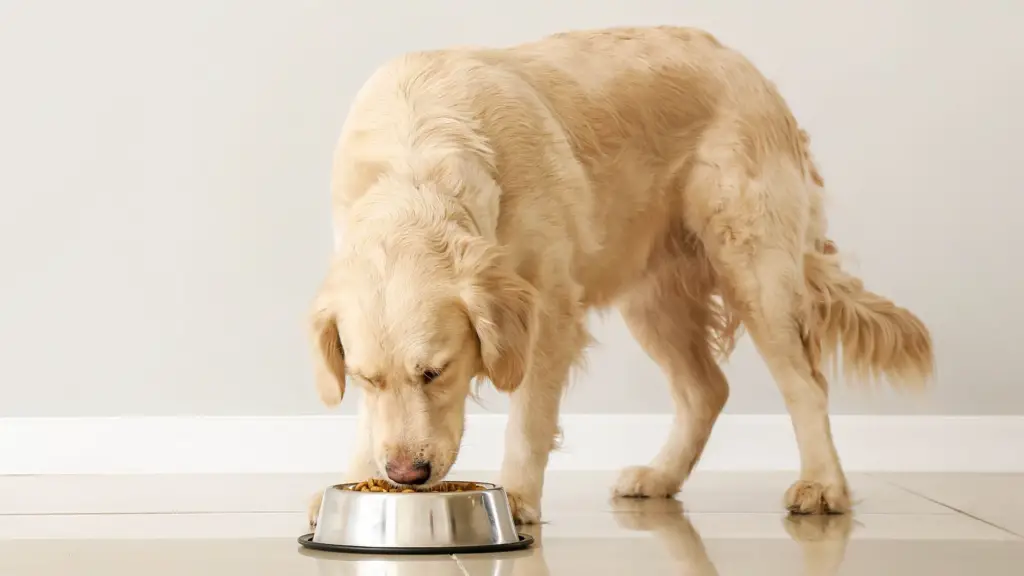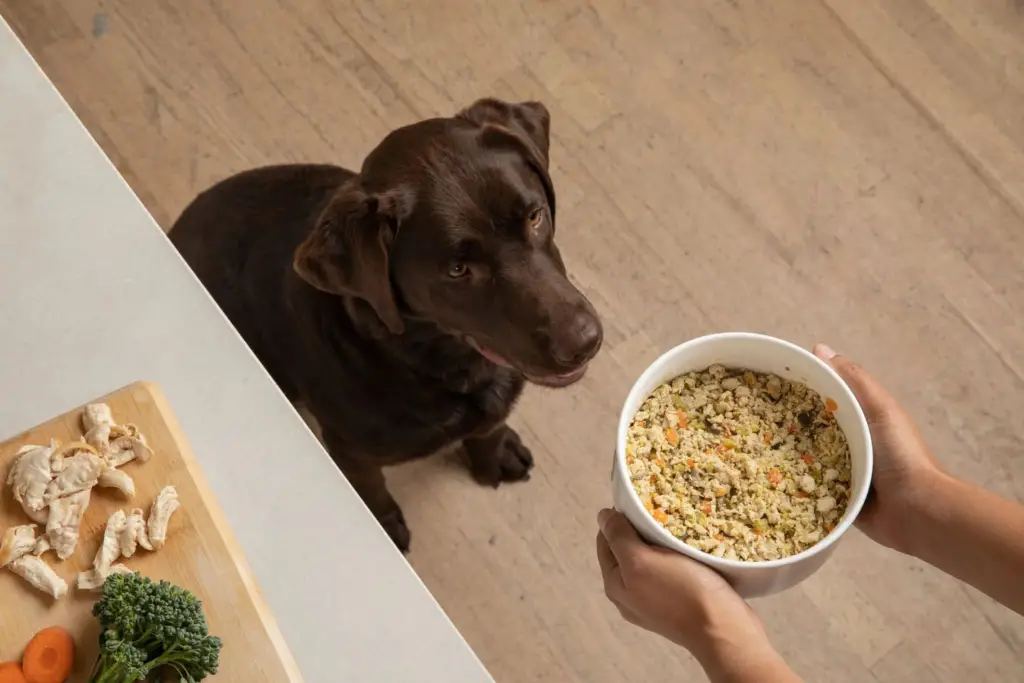Unlock Low Protein Diet For Dogs With Kidney Disease Issues

Kidney disease, or renal failure, is a prevalent condition in dogs, especially as they age. The kidneys are vital for filtering waste, balancing electrolytes, and maintaining overall hydration.
When these organs fail, toxins accumulate in the bloodstream, leading to severe health issues.
Recognizing the signs of kidney disease and urinary tract infections early and implementing a comprehensive management strategy, including dietary adjustments, is crucial for the health and well-being of dogs with this condition.
This article delves into the rationale behind a low protein diet for dogs with kidney disease, outlines the benefits, and provides guidance on effectively implementing such a diet.

When the kidneys are compromised, they lose the ability to perform these vital functions efficiently, accumulating toxins in the body, which can be detrimental to the dog’s health.
Key Takeaways
- For dogs with kidney disease, it’s important to reduce the amount of protein in their diet to lessen the strain on their kidneys. Depending on how advanced the kidney disease is, the amount of protein needed can change, so it’s best to ask a vet for advice.
- When protein is included in the diet, it should be easy for the dog to digest and contain all the essential nutrients they need. Fresh Food diets like egg whites and lean meats are good choices.
- Eating less protein helps decrease the workload on the kidneys, can make symptoms like nausea and tiredness less severe, and may slow down the kidney disease’s progress, helping the dog feel better overall.
- Changing to a low-protein diet should be done carefully and with a vet’s help. Start by slowly mixing the new fresh food diets with the current dog’s food to avoid upsetting their stomach. Regular check-ups with the vet are also important to see how well the diet is working.
- Besides eating the right diet, dogs with kidney disease might need extra supplements, like fish oil rich in omega-3 fatty acids for inflammation, and always have access to fresh water to stay well-hydrated. These steps can help support kidney health alongside diet changes.
Protein Levels in Dog Food for Kidney Disease
Kidney disease in dogs is a complex condition that requires comprehensive management strategies to ensure the well-being and quality of life of our canine companions.
A pivotal component of this management is dietary modification, specifically through adopting a low-protein dog’s diet.
According to PetMed, Kidney disease, also known as renal disease, affects a significant number of dogs, particularly in their senior years.
The kidneys play a critical role in filtering waste products from the blood, maintaining hydration, and balancing electrolytes.
According to PetMed, the veterinary nutritionist’s role is important in treating dogs with kidney disease.
The main reason for recommending a low-protein diet for dogs with renal insufficiency is to reduce the production of nitrogenous waste products, which are primarily generated from protein metabolism.
When the kidneys are not functioning properly, these waste products can build up in the blood, leading to worsening symptoms and further kidney damage.
A diet lower in protein helps alleviate the burden on the kidneys, improving the dog’s quality of life.
When managing kidney disease in dogs through a kidney diet, adjusting protein levels with other essential nutrients is a critical component.
The goal is to reduce the workload on the kidneys while ensuring the dog receives enough high-quality protein to maintain muscle mass and overall health.
The precise protein level can vary depending on the stage of kidney disease and the dog’s health status, making veterinary guidance essential.
Recommended Protein Levels
Early to Moderate Kidney Disease:
Protein content should be moderately reduced compared to standard adult dog food.
The aim is to provide about 14% to 18% protein on a dry matter basis (DMB), ensuring the protein is of high biological value to minimize waste products that the kidneys need to filter to support kidney function.
Chronic Kidney Disease or Chronic renal failure:
For dogs with advanced kidney disease, dietary protein may need to be limited further, to around 12% to 14% on a dry matter basis.
The focus remains on high-quality protein sources to support bodily functions without excessive nitrogenous waste production supporting renal function.

High-Quality Protein Sources
High-quality proteins are those that are highly digestible and contain all essential amino acids.
Examples include egg whites, lean meats, and specially formulated kidney care diets.
Balancing other nutrients such as phosphorus, potassium, and sodium is also essential, as imbalances in these can exacerbate kidney issues.
The Role of Low Protein Diets
Protein in the diet is broken down into nitrogenous waste products through protein metabolism, which the kidneys filter out from the blood.
A dog with kidney disease has compromised kidney function, and reducing the amount of protein in the diet can help decrease the dog’s kidney function.
This, in turn, can help to slow the progression of kidney disease and improve the dog’s quality of life.
Benefits of Low Protein Diets
- Reduced Kidney Workload: By protein restriction, there’s less nitrogenous waste for the kidneys to filter, which can help in managing blood urea nitrogen (BUN) levels, a key marker of kidney function.
- Management of Symptoms: A low protein diet can help reduce symptoms associated with kidney disease, such as nausea, vomiting, and lethargy, by decreasing the levels of toxins in the blood.
- Slowed Disease Progression: Although not a cure, dietary management through low protein intake can slow the progression of kidney disease, potentially leading to a longer and more comfortable life for dogs suffering from this condition.
Implementing a Low Protein Diet
Transitioning to a low-protein diet should be done under the guidance of a veterinary professional. Here’s a structured approach to implementing such a diet:
- Veterinary Consultation: A veterinarian can confirm the diagnosis of kidney disease and prescription renal diets tailored to the specific needs of your dog and dietary guidelines.
- Choosing the Right Diet: There are commercial dog foods available with low protein diets as well as homemade kidney diets for dogs with kidney disease. A commercial and homemade diet is designed to meet a dog’s nutritional needs while minimizing protein content.
- Gradual Transition: Dog owners should slowly introduce the new, low-protein diet over several days to a week, mixing it with the dog’s current food to avoid gastrointestinal upset.
- Monitor Health and Progress: Regular check-ups with a veterinarian are crucial to monitor the progression of kidney disease and make dietary adjustments as necessary.
Supplements and Supportive Care
According to Jennifer Coates, In addition to dietary management, dogs with kidney disease may benefit from supplements such as omega-3 fatty acids, which have anti-inflammatory properties, and probiotics to support gut health.
Ensuring that dogs with kidney disease have constant access to fresh water is vital. Adequate hydration is also essential, and providing constant access to fresh water is critical.
Conclusion
A low-protein diet is a cornerstone in the management of kidney disease in dogs, aimed at reducing the workload on the kidneys and improving the quality of life for affected canines.
It is essential to work closely with a veterinarian to tailor the dietary approach to the individual needs of the dog, ensuring they receive the necessary nutrients while managing their condition.
Dogs with kidney disease can enjoy a comfortable and fulfilling life with the right care and dietary management.
Implementing adequate nutrition with a low-protein diet under veterinary nutritionist guidance, alongside supportive care, offers a proactive approach to managing kidney disease in dogs, highlighting the importance of a tailored nutritional strategy in the overall treating kidney disease.
Frequently Asked Questions (FAQs)
Why do dogs with kidney disease need a low-protein diet?
Dogs with kidney problems can’t filter waste well, so eating less protein means less work for their kidneys. This helps reduce symptoms and may slow down the disease.
How much protein should a dog with kidney disease eat?
It depends on how severe the kidney disease is. Early on, they might need a bit less protein, about 14% to 18% of their diet. If their kidney disease is more advanced, they might need even less, around 12% to 14%.
What are good protein sources for dogs with kidney disease?
High-quality proteins that are easy to digest, like egg whites and lean meats rich in omega-3 fatty acids are best. These provide essential nutrients without overloading the kidneys.
How do I switch my dog to a low-protein diet?
Change their diet slowly by mixing the new low-protein renal diet with their current food over several days. This helps avoid stomach upset. Always do this under a vet’s guidance.
Can dogs with kidney disease eat commercial dog food?
Yes, there are special low-protein commercial dog foods designed for kidney health. It’s important to pick these carefully, preferably with your vet’s advice, to make sure your dog gets the right nutrients.
Is homemade food better than commercial diets for dogs with kidney disease?
Both homemade diets and commercial kidney diets can be appropriate for dogs with kidney disease, provided they meet the necessary nutritional criteria.
Homemade diets offer more control over the ingredients and nutrient composition but require careful planning and veterinary guidance to ensure they are complete and balanced.
Commercial diets are formulated to meet the specific needs of dogs with kidney disease and can be a convenient and effective option.
